Опис
“How to Become a Financial Investigator” by the authors Ivica Simonovski Ph.D. and Kristina Evgo M.Sc. focuses on particularly current issues that in recent years have come into focus of experts and scholars alike. The financial investigation is a crucial tool for detecting money laundering, terrorist financing and other serious crimes. It enables the investigators to obtain new information regarding criminal acts, to successfully map out entire criminal networks, and to disclose essential evidence for prosecution of the perpetrators, seizure of the proceeds of crime, and confiscation of their property.
The book is prepared in a form of a textbook that is highly beneficial for both practitioners and scholars. With this book, they can get acquainted with the latest theoretical studies on financial investigations, but also how the financial investigations are practically undertaken using the appropriate tools, methods and techniques, as well as software solutions for presenting the results of financial analysis. The authors emphasize how beneficial such a work is for the investigators – practitioners, that is, the opportunity that it gives them to gain knowledge and develop skills in order to use methods and tools with respect to conducting financial investigations.
This book can be used not only in the Republic of North Macedonia; it is conceptualized to be used in any country and is intended for all practitioners dealing with the issue of financial investigations, including bank clerks, exchange offices, fast money transfer providers, lawyers, accountants, notaries, investigative journalists and other professionals and agencies dealing with the issue of financial investigations, which should promptly detect suspicious financial transactions and activities.
The first four chapters of the book explain, define and analyze the terms “illicit financial flows”, “money laundering”, “terrorist financing”, and “property and proceeds (property gain) of crimes”. The fifth chapter “What is a Financial Investigation” studies the need and goals of the financial investigation which should be conducted in parallel (together) with the criminal investigation. In this chapter, the authors give a special overview of the goals of the financial investigation that should enable: detection of the crime from which illegal proceeds are generated, as well as the perpetrators of the crime; determination of the illegal proceeds acquired from the commission of a crime; determination of the proceeds that need to be seized; provisional measures for securing the illegally acquired proceeds of crime. The authors also emphasize the need for proper management of seized or confiscated property. In the sixth chapter entitled “Prerequisites for Conducting Financial Investigations” the authors give a special overview of the legal basis for successful planning of financial investigations by the competent institutions, as a parallel process with the criminal investigation.
The seventh chapter – “Investigative Methods and Techniques for Data Collection, Structuring and Analysis” explains the methods and techniques available to the financial investigator that he or she should use to obtain evidence. According to the authors, investigative methods and techniques are generated in three basic categories, that is: standard investigative techniques; special investigative measures, and integrated financial investigation – financial analysis.
The eighth chapter “Building Networks for Cooperation and Coordination” emphasizes the essential need for cooperation between investigative bodies and their coordination in the conduct of financial investigations. Of particular importance is the cooperation with the Financial Intelligence Unit, through which the quantitative and qualitative financial data necessary to identify, locate and monitor illegally acquired property can be provided. The authors in this chapter emphasize the need for inter-institutional and international cooperation and the exchange of data and information between countries, using formal and informal channels of communication.
The last, ninth chapter, entitled “Provisional Measures and Confiscation”, explains the significance of provisional measures consisting of the temporary seizing (freezing) of property under investigation and suspected of criminal origin. The robust system of provisional measures and confiscation is an important part of an effective system for combating organized crime and money laundering. At the end of this chapter, the authors explain the types of confiscation, that is, property-based confiscation, as well as value-based confiscation.
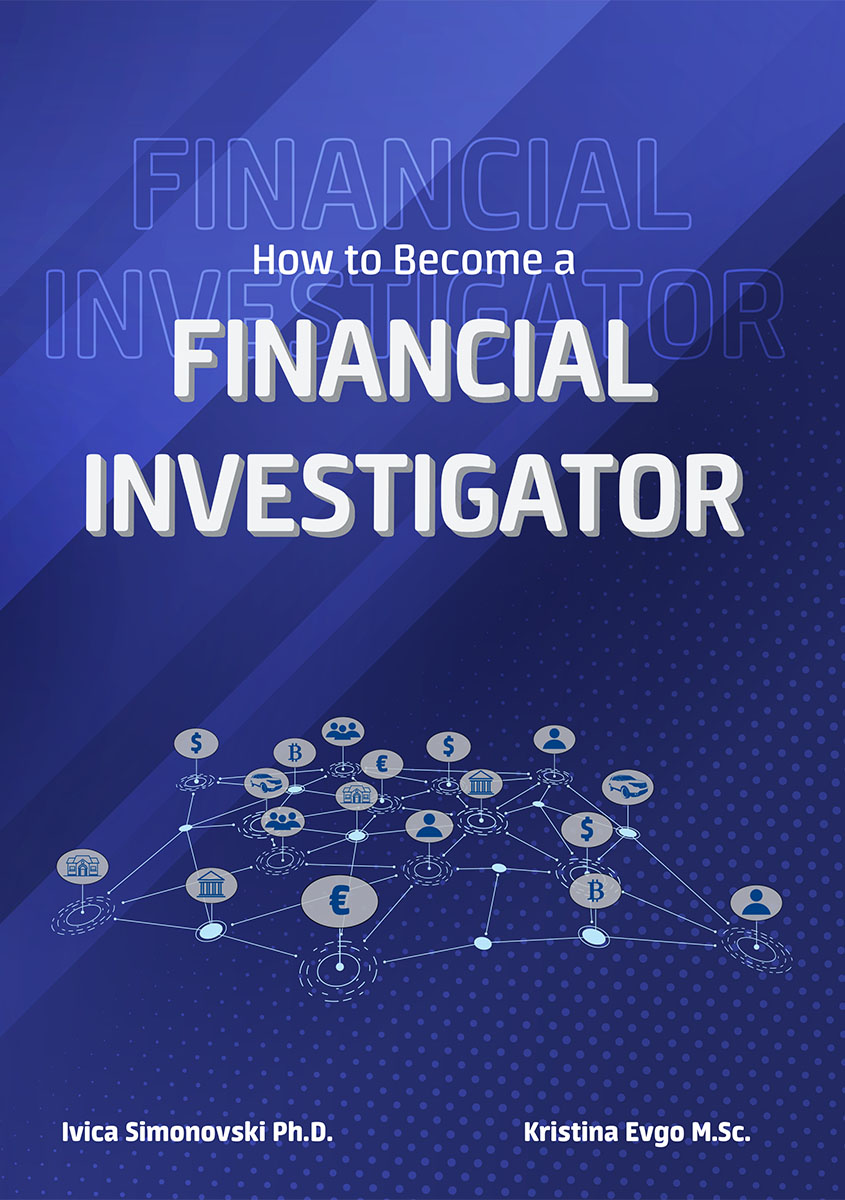
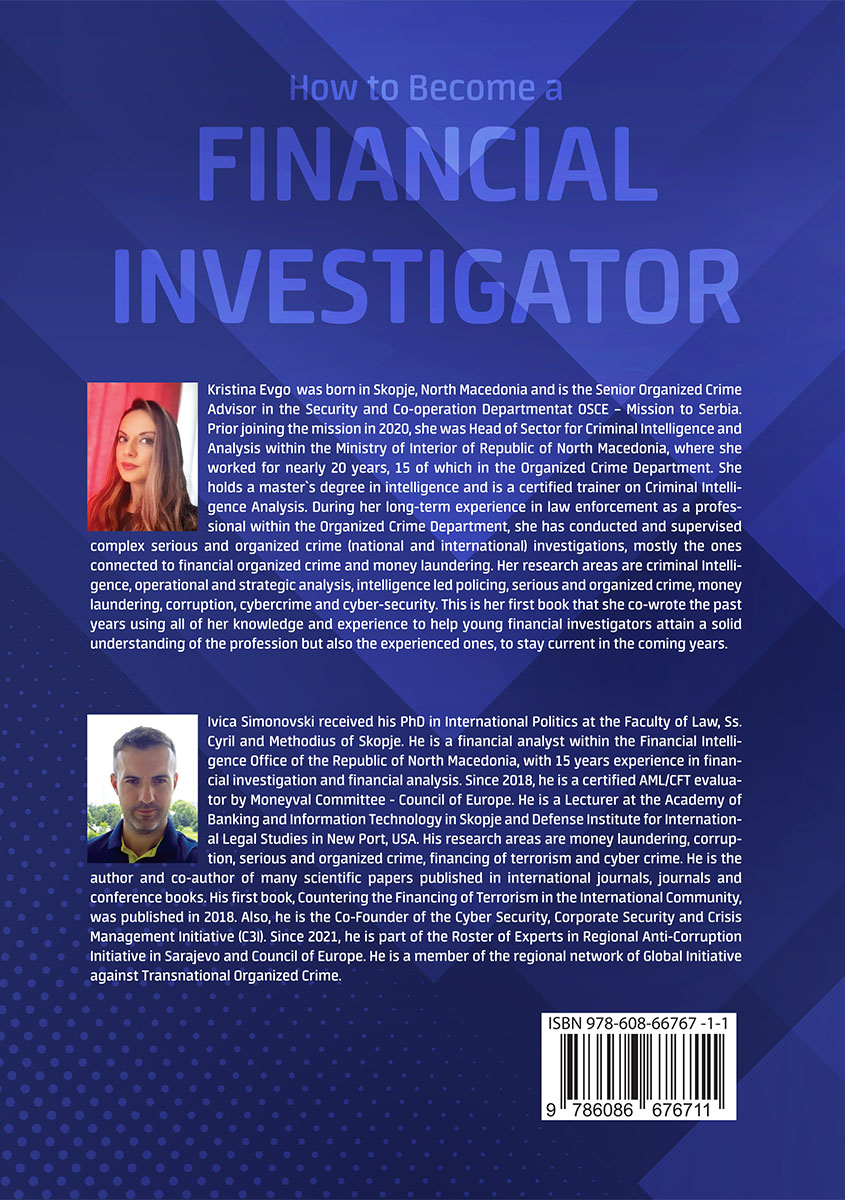
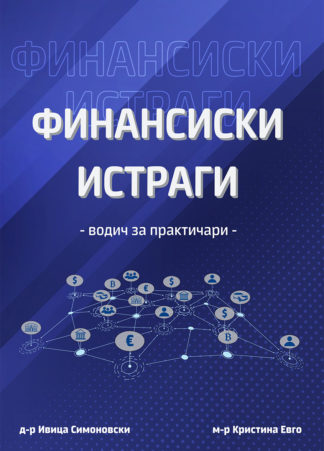
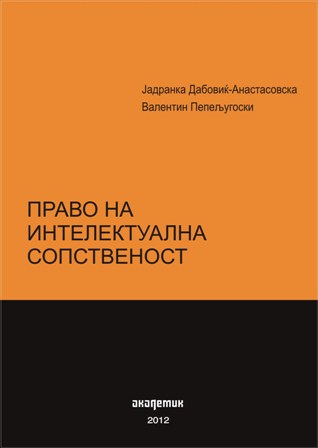
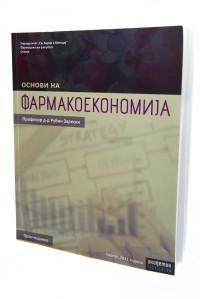
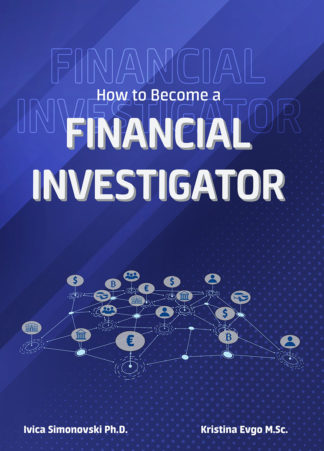
Chris Westphal –
This book delivers a clear oversight of the international perspective on combating financial crimes – not just a regional or local view. The authors review how different definitions and categorizations for illicit financial flows are defined by organizations such as the World Bank, United Nations, Financial Action Task Forces (FATF), and the Organization for Economic Co-operation and Development (OECD) and how they can impact the scope of investigations to answer the question “What is Money Laundering?”
The book also contains a lot of helpful info-graphics to clarify and diagram many of the ML themes and concepts presented. The diagrams are colorful, easy-to-read, comprehensive, and help simplify the complex topics discussed. These graphics are a great asset to this publication.
In the first half-of-the-book, the authors cover the basic premise for money laundering (placement, layering, and integration) with some detail regarding terrorist financing and what constitutes the property and proceeds of crime. This section provides many good examples describing different concepts and techniques of how ML is conducted. Also, the authors did a great job at presenting the different roles and categories of individual-self, professional, and group/ organizations of money launderers.
Starting at Chapter 5, and the premise of the book, is where the juicier details are provided for the fundamentals of financial investigations. It continues into planning the investigation along with the key-elements (people, technical, data, and materials resources) of a financial investigation plan. The authors also address what a team should look like and their skills and expertise in related laws, economics, security, accounting IT, legislation, international standards, conventions, and expertise. Plus, and very important, interviewing skills, preparing witnesses, intelligence operations, along with written expressions and documentation. There is even a section discussing Case Management, how to coordinate the operations, and appointment of team leaders and managers.
The chapters covering investigative techniques are key to the book. Different components for the investigation include; standard interviews, procedures for detention (arrest), searching records, seizure of items/assets, inspection of assets (vehicles, persons, buildings, and businesses), and even “garbage” searches (i.e. trash/dumpsters). There are discussions about monitoring communication and electronic devices, physical surveillance, controlled deliveries, covert operations, and much more.
My favorite part (my background) was the section discussing financial analyses and the various tools. Lots of examples are provided showing tabular representations, link charts, time-flows, and visualizations. It also covers different source-collections (banks, public records, etc.) and how to apply the analytics.
The book wraps up with an important discussion about building networks for investigative cooperation; task forces, legislative bodies, international assets, police/law-enforcement, financial intelligence units, etc. Cases are often large, complex, and international in scope and therefore require the support of many different organizations and agencies. There are some good insights into how to achieve these interactions, where to ask, and what to reference or cite for support.
This is a great primer for people wanting to learn more about financial crimes and how to approach an investigation. It provides a roadmap of key concepts and factors that must be considered for anyone wanting to become a financial investigator.